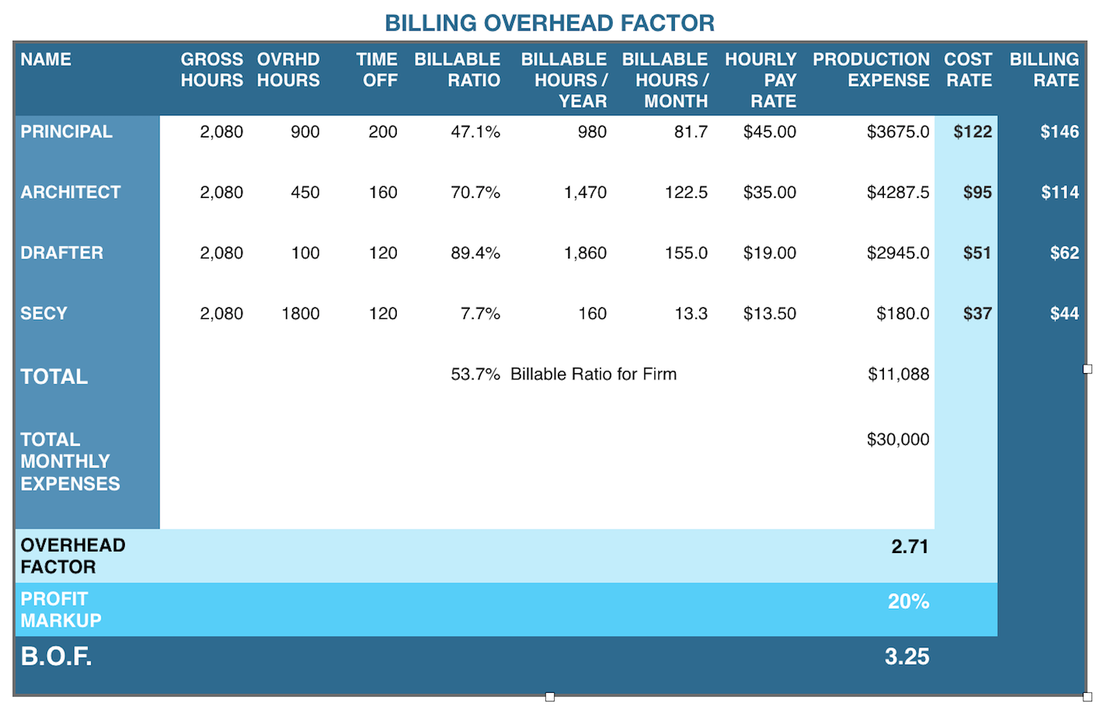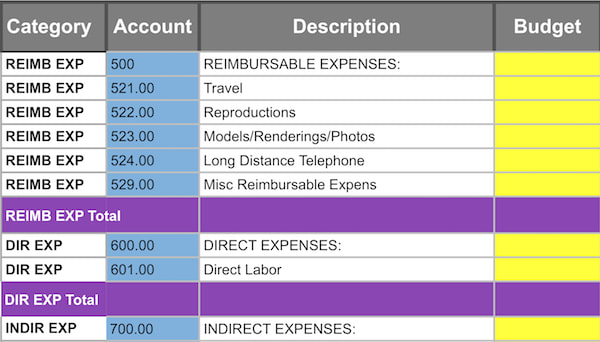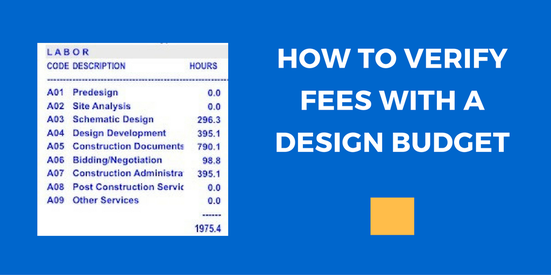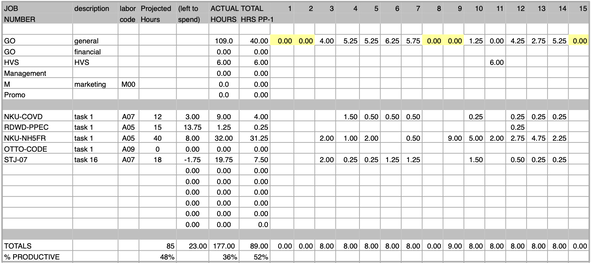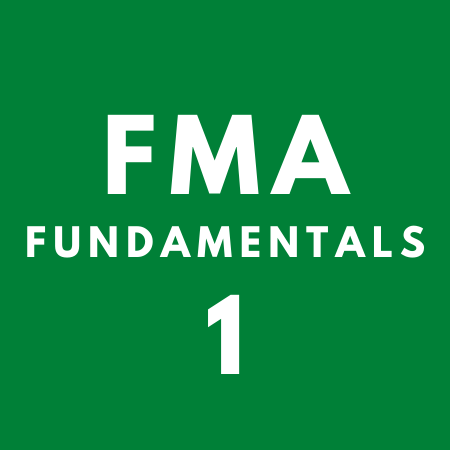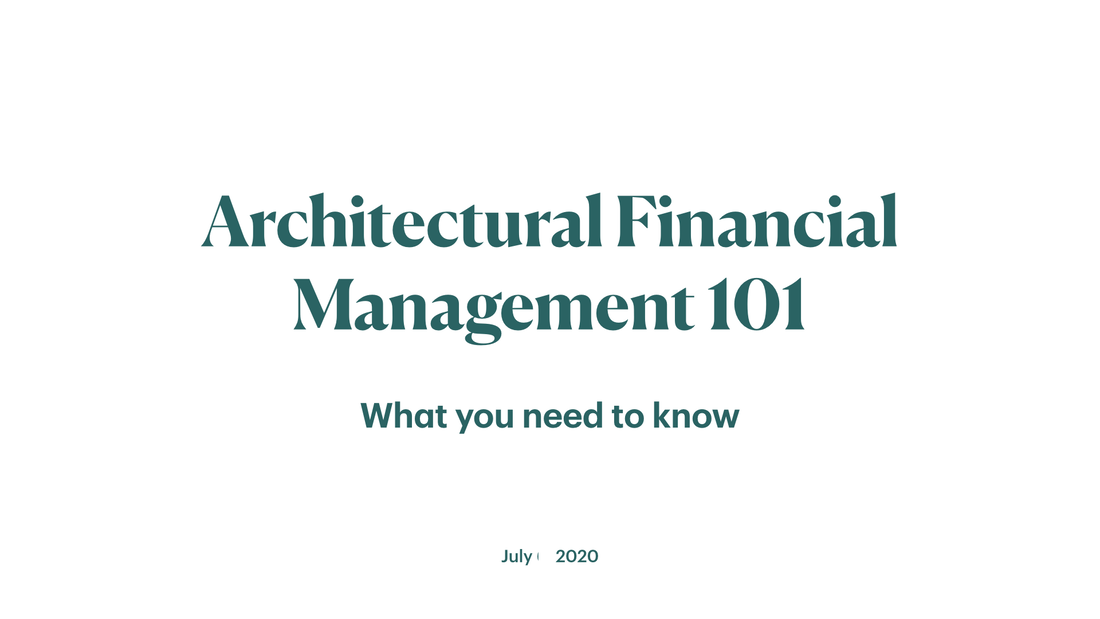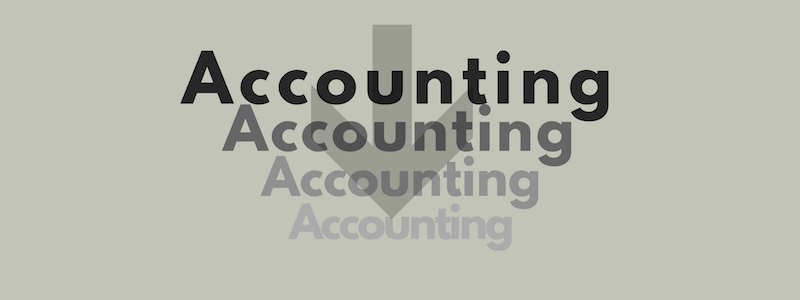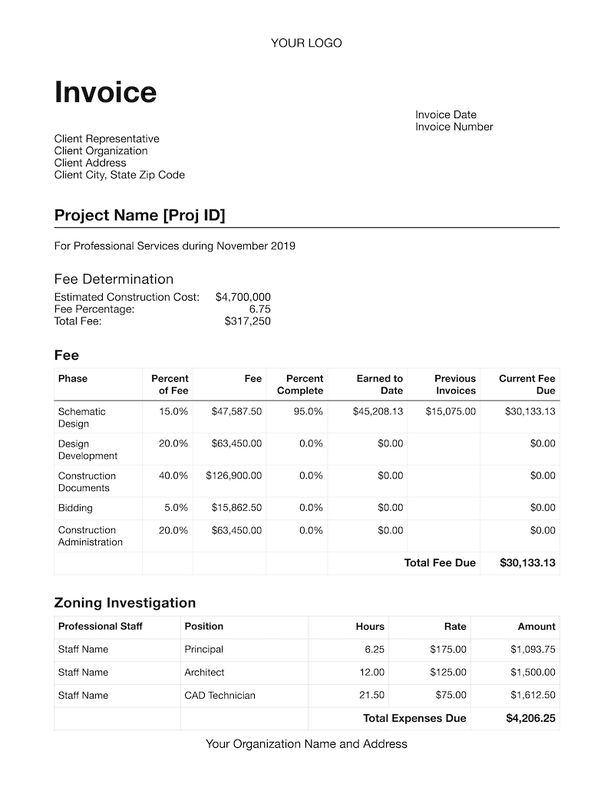|
I have Kraig Kramers to thank for describing how this tool works.
The tool is called a ’Trailing 12 Month’ chart. The Financial Model of an Architect’s Office is a well-kept secret. I have never seen it mentioned anywhere. But there are several things that need to be in balance to get positive financial results. The resources available from the AIA are only useful if you already have an MBA-like understanding of finances. A Financial Model entails more than “Income minus Expenses should be a positive number.” Negative numbers equal poison. You can’t survive much poison. I have to mention Page Highfill here. He is the architect who told me about the financial model that architects need to know about. Determining your Billing Overhead Factor [BOF] can be an eye-opening exercise.
I learned this technique from Paige Highfill, an architect, who was teaching other architects how computers can be used in architecture even before CAD came along. When I tried out the calculation, I was shocked to find that we were losing $15 per hour on every hour we billed! I suggest that you avoid that situation. I have always found that one of the key parts of getting a grip on the firm's finances is to have a good idea where the money goes. You might not need all the line items in the budget template here, we didn't; but it is helpful to start with all the possibilities and narrow things down from there.
The Problem With Plans
I guess the calendar year is the accepted time frame for taking stock of achievements and planning for the new year.
At one time or another I have used each of these methods. Those sometime painful experiences are the basis for my recommendation.
There is a new tool that could be a game changer for your firm.
Read on to see what Coda can do for you. Whether you have arrived at a fee by a wild guess or a fee schedule you want some kind of corroboration.
One option, if you keep good records, is to compare this project to a similar project. Was the fee adequate on that other one? Usually the two projects are dissimilar in some way. Another way of checking the 'rightness' of an architectural fee is to evaluate its 'rightness' when viewed as a design budget. This option involves doing an evaluation. It is fairly easy to 'spread out' the fee over the design phases to see how adequate the fee actually is. Here's How... What You Need To Know
93% of architectural firms don't need accounting - bookkeeping is plenty. Having my own firm gave me the opportunity to make lots of mistakes;
and I took advantage of nearly every one of them. If you are happy with your way of storing your files, then this won't help you. If not, you may get an idea or two here.
If you do a good job of Construction Administration,
you, the architect, will lose money. Guaranteed. |
x
Archives
February 2024
Categories
All
|
Architekwiki | Architect's Resource | Greater Cincinnati
© 2012-2022 Architekwiki
© 2012-2022 Architekwiki



